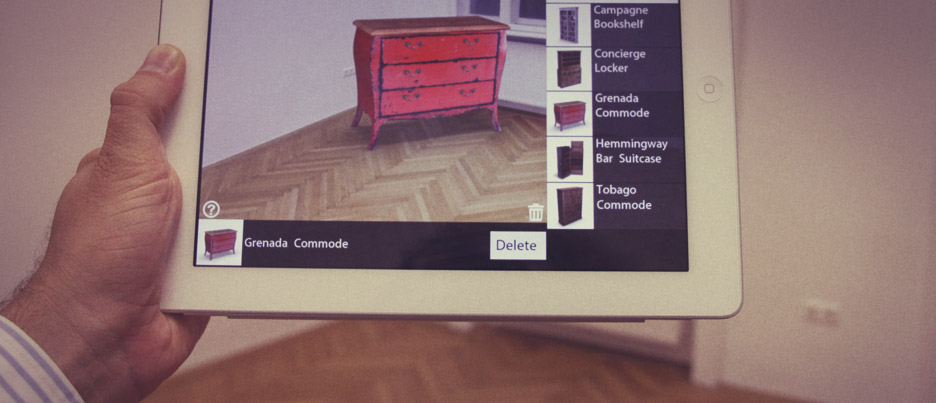AN EXPANDING UNIVERSE: Augmented Reality and B2B

Last week’s blog looked at the meteoric rise in the use of virtual reality (VR) apps by consumer marketers, particularly in highly discretionary, visually driven segments like tourism. This week, we’ll look at the use of a similar technology, augmented reality (AR), in a very different universe – business-to-business (B2B) marketing.
We’ve already defined virtual reality, which is a more immersive experience than augmented reality, but they’re essentially the same concept. With AR, a computer-generated simulation is overlaid on a real-world environment. These simulations can be interactive 3D models, images, or information.
All too often, agency types dismiss B2B marketing as overly dry and technical, lacking the creativity and visual appeal of B2C campaigns. However, a growing number of B2B marketers are changing that stereotype by employing bolder, cleaner creative units and sophisticated digital tools like augmented reality.
In some ways, AR is an even more a natural fit for business-to-business, where conceptual products are often unveiled (and sold) at trade shows well before they are finalized and in production. The experience of Pentair Water and its Hybrid DI water filtration system is an excellent example of this. Even though the system was more than a year away from production, it was unveiled at two major international events, the Aquatech Show in Amsterdam and later at the Aquatech North America in Las Vegas. Although no actual working models were available, the product’s inner workings – and sophisticated deionization technology – were clearly displayed through the use of a virtual reality app based on computer animation. Booth personnel used VR-equipped iPads and Android tablets to “demo” the product to more than 1,000 potential distributors or licensees at the Amsterdam show. In Las Vegas, the AR app was used to launch the product under a licensing agreement with Rainsoft.
Tablet computers are also the launching pad for another increasingly popular use of AR called virtual installation. In virtual install, AR-equipped tablets are used in conjunction with the tablet’s base photographic capabilities to show what a space would look like if it had furniture, machinery or even walls.
The virtual install app used by Rite-Hite’s (Arbon Distribution) field representatives illustrates the effectiveness of this approach. Using tablets, reps were able help industrial facilities managers to visualize what a potential installation of fabric curtain walls in their warehouse or plant would look like. By making it easier for customers to “see” the wall installation, the app implicitly made it easier for them to sign off on the purchase. Working in conjunction with a bold B2C-style advertising campaign, the virtual installation app has helped Rite-Hite’s Zoneworks division double its sales over the past three years.
Of course, apps similar to Pentair’s and Zoneworks’ are also being employed by consumer marketers. For example, IKEA implemented an iPad app that allows shoppers to see how furniture looks in their homes before they lug a sofa (that might not even fit) up six flights of stairs to their living room. According to IKEA, 70 percent of furniture shoppers don’t know the dimensions of their own home, which makes shopping for large items rather challenging. However, with a little help from augmented reality and a smartphone or tablet, customers can visualize 3-D pieces of furniture in their own home before purchasing it – all without lifting a finger.
Obviously, the once-parallel universes of B2C and B2B are on a collision course – and it doesn’t take a nuclear physicist to conclude this trend will continue. Today’s successful B2B marketers are stepping out of the black hole of copy-heavy layouts and print-centric media buys and embracing cutting edge digital marketing, just like their B2C brethren. In both cases, AR and tablet technologies are redefining the buying process. You could call it the next “Big Bang” of consumer stimulation.

